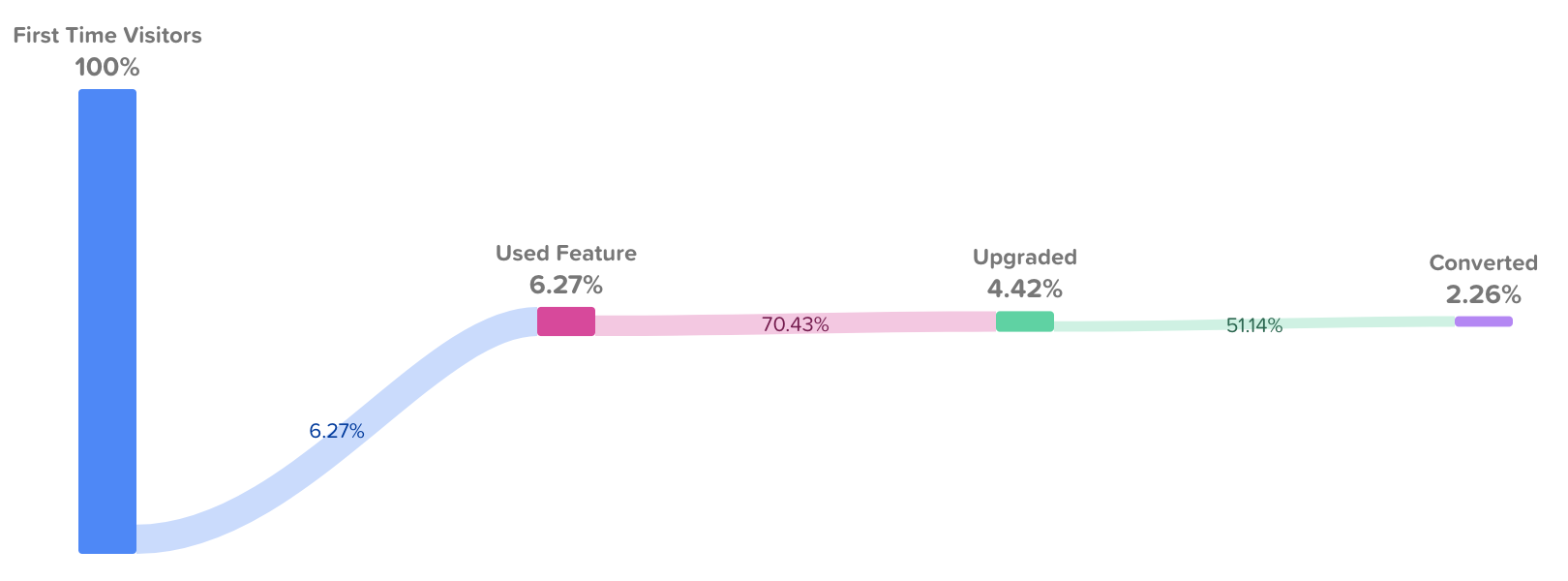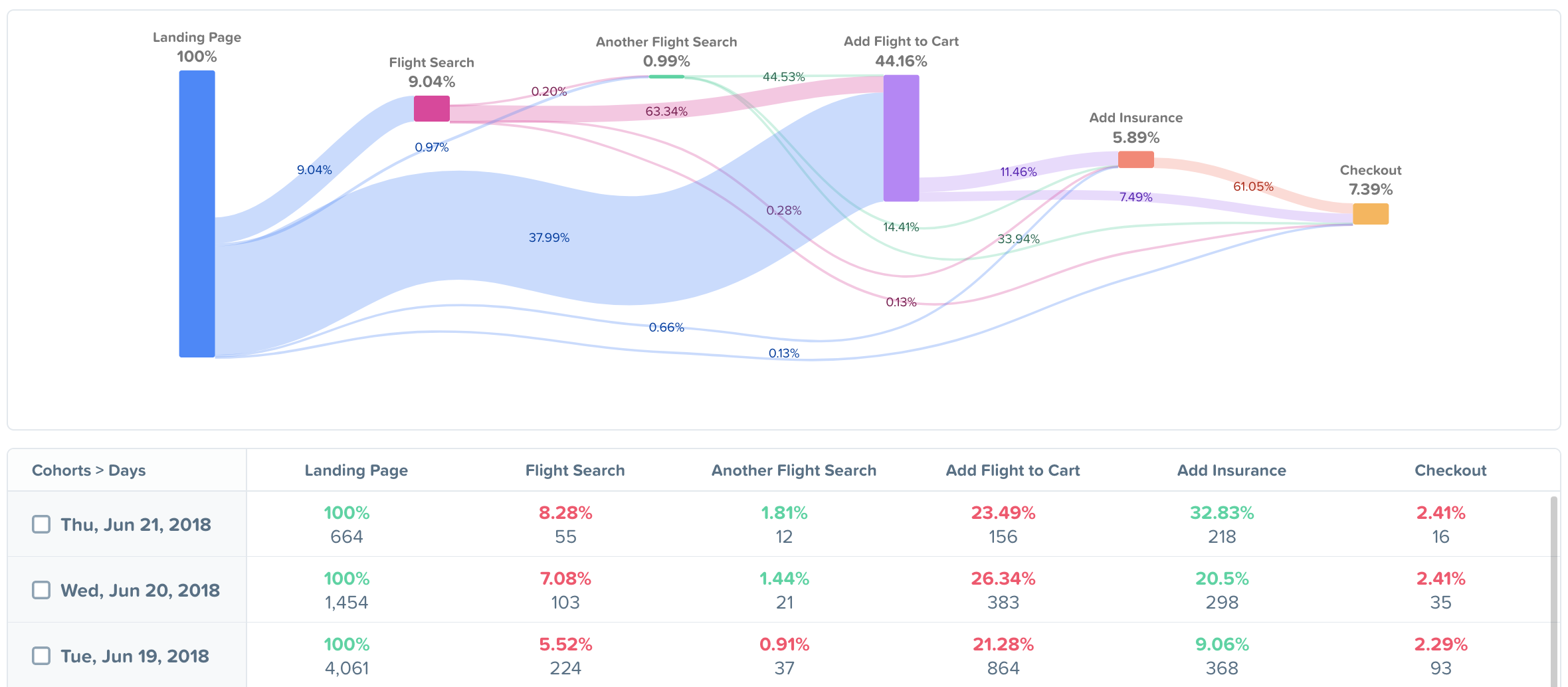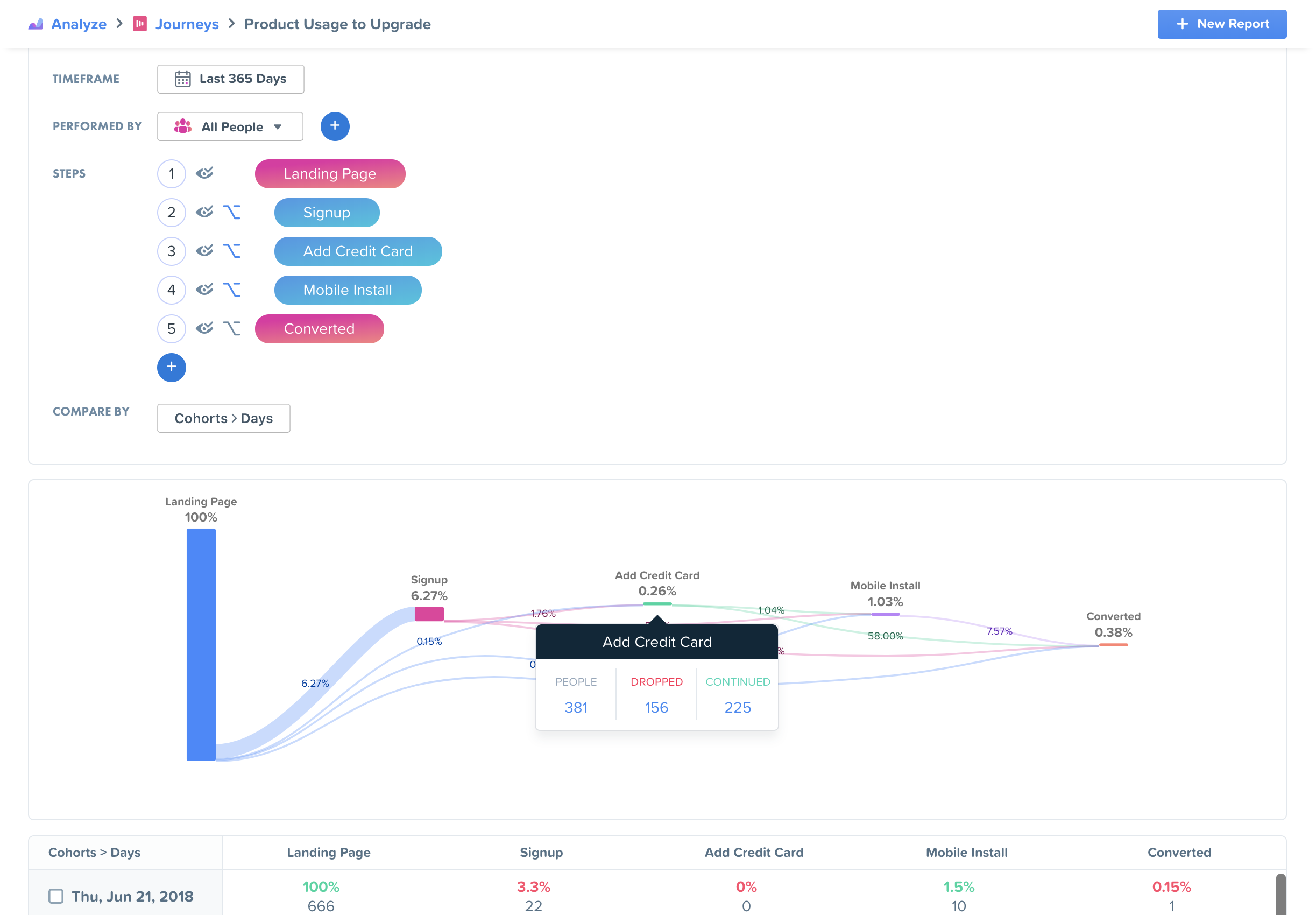Customers take a multitude of different, distinct paths when finding your company, engaging with your product and evolving with your brand through the customer lifecycle. Regardless of vertical or industry, this journey can be summarized into a series of pivotal, defining moments that (hopefully) blossom into a mutually beneficial, long-term relationship.
Journeys help to define the path that customers take when building this relationship. Odds are you’ve created funnels at some point to identify momentous steps, map out workflows, measure conversion rates and optimize the user experience.
But, what if I told you that some of the most vital elements impacting these funnels are rarely factored into the equation? Moreover, that from this omission, stems misguided assumptions, misdirected efforts and misplaced spend?
“Some of the most vital elements impacting these funnels are rarely factored into the equation.”
If your hope is that I, not only demonstrate why this is a real problem, but also illustrate a resolution, keep reading! In this piece, you’ll learn the dysfunctions of traditional funnel mapping and how Woopra’s Journey Analytics are purposefully designed to overcome them.
Where Traditional Funnels Fall Short
One of the most widespread challenges facing companies that strive to be customer-centric is that their organization is built around functional silos. Customers recognize this as they’re passed from department to department in the customer journey, and companies themselves feel this pain when looking to implement improvements based on customer feedback.
When organizational data is siloed across functions, employees fundamentally lack the ability to create Journeys that align with what the customer is actually experiencing. Instead, they find themselves creating linear funnels, based more on opinion than data-driven research.
“Organizational data siloed across functions stunts employees from creating Journeys that align with what the customer is experiencing.”
In truth, there is nothing linear about today’s modern consumer. So, in disregarding those key variables that impact the experience, we fail to see the world as our customer’s do.
The subtle differentiator is less about the questions that we know to ask and more about those that we never thought to ask. Let me give you an example. Let’s say you want to understand the impact a new product feature has on revenue. The funnel you build will probably include data on feature engagement, conversions and upgrades.

As a product manager, the above Journey is justification that, in fact, the new feature is successfully driving revenue. However, is this the true experience or simply a reflection of what you hoped to see?
What if the truth is that, while users are engaging with the new feature and converting, they’re also submitting 50 percent more support tickets and the NPS score of those that convert drops significantly? If you incorporated additional data points, this story would look far different and you’d be armed to make the appropriate changes.
When we start to view the customer experience from their perspective, incorporating cross-functional variables that can significantly impact these funnel results, we uncover the moments that drive customer success and can allocate efforts accordingly. To overcome these barriers, companies must start to think in terms of the total customer journey.
“When we start to view the customer experience from their perspective we uncover the moments that drive customer success.”
Woopra Journeys for Optimizing Total Customer Experience
One of the most powerful features within Woopra, Customer Journey Reports, allow you to do just that. Fully-equipped with real customer data, cross-departmental touch points, product engagement, behavioral analysis, campaign sentiment and more.
Designed to uncover the questions you might not think to ask and overcome departmental barricades, they allow you to combine any set of actions, events or goals to understand how customers move through conversion paths in campaigns, on your site or within your application.
Use Woopra Customer Journeys to:
Compare how different customer segments engage with your brand
Identify your best and worst converting customer types
Monitor how visitors move through distinct journeys on the path to purchase, incorporating as many or as few touch points necessary
Identify and target at-risk areas and optimize to create better user experiences
Measure full-funnel campaign attribution with any combination of criteria
Ask any questions, and uncover new ones, for an understanding of the total customer, and more!
The beauty of Woopra’s Customer Journeys is that the more you track, the more you can compare. Are mobile users more likely to convert than desktop users? Do visitors who read your blog have a higher propensity to purchase? Find out by comparing and segmenting Journeys based on user demographics, campaign name, referrer type, system information or any visitor property that you might track.
“The beauty of Woopra’s Customer Journeys is that the more you track, the more you can compare.”
With such powerful insight, it becomes easy to recognize if a certain feature is causing users to churn or if a documentation page is driving more support tickets. Equipped with this knowledge, every department in the organization can begin to leverage Journeys to deliver better experiences incorporating the customer’s perspective, not their own.
“Leverage Journeys to deliver better experiences incorporating the customer’s perspective, not your own.”
Identifying and Sequencing Your Goals
The first step to building your Journey is identifying the goals to include. These can be any of the key metrics you’re tracking in Woopra such as pageviews, signups, form completions, transactions, email opens, support tickets, etc. Include as many as you like and adjust the sequence to reveal the different paths you want to analyze.
As you set up your Journey goals, Woopra will, “calculate the cohort of visitors which completed the first goal, how many of these then completed the second goal, how many then made it to the third goal and so on, as well as the average amount of time and number of visits between each completion.”
For example, let’s say you’re an airline and would like to see the steps users are taking before to booking a flight. Your goals could include a user’s first landing page view, first flight search, a second flight search, adding a flight to the cart, adding insurance and checking out.
By building out the goals within a Journey, you can see exactly how many people move through each goal, where they drop off and how many purchase. From here, you can also begin to add in the “not so obvious” variables such as support tickets, email campaigns, frequent flyer information, etc. to increase granularity and depth of insight.

In a SaaS company, a similar signup Journey could identify how many free trial users convert to paying customers. Steps might include users who came to your website, signed up for a free trial, added a payment method, downloaded the mobile app and upgraded to a paid subscription.

*Pro Tip: To help define initial Journey goals, start by asking a series of questions relative to the result you’re trying to achieve.*
For example, if you want a new feature to drive revenue and reduce churn, you could ask, “are users engaging with a new product feature more likely to upgrade?” And, “if they do upgrade, how likely are they to churn?”
Based on this question, you could build a Journey (similar to the one below) with steps showing who engaged with the feature, how engaged they were, if they eventually upgraded and subsequent actions. Again, with the ability to dig deeper by diving into the micro-cohorts and adding optional steps as you learn more.

Long Term vs. Short Term Journeys
Long term Journeys provide a high-level overview of the customer experience. You can see an overarching perspective of how users move through a Journey and drill down to the original cohorts completing each step to identify areas for improvement.
As the CEO or department head, you might be interested in keeping an eye on long term Journeys to get a pulse on how your department or the company is performing as a whole.
In contrast, short term Journeys allow for instant optimization of very specific moments within the customer experience. For example, let’s say you manage paid advertising at your company. Using a tool like Google Adwords you can measure how campaigns are performing up to the point of conversion. But, who are those users that convert and what happens after they, for example, signup for a free trial?
A short term funnel in Woopra instantly shows which campaigns are performing best. You can use the comparisons feature (discussed more below) and analyze by campaign source, name, keyword, etc. This allows you to quickly identify if a certain campaign is driving a higher caliber of conversions and room to optimize for maximum efficiency. Timeframes are completely customizable as well, so the date range can be adjusted depending on the period that matters to you most.

*Pro Tip: [Learn how CloudApp leveraged Woopra Journeys](http://www.webanalyticsworld.net/2016/11/mastering-full-funnel-attribution-with-customer-analytics.html) to measure full-funnel attribution across functions and campaign sources.*
Using Comparisons for Analysis and Discovery
As mentioned above, the more questions that you begin to ask of your Journeys, the greater your level of insight. Once you’ve mapped out a long or short term Journey representing the appropriate dimensions and phases of the cohort you’re analyzing, leverage Woopra’s comparisons to reveal greater insight from your data.
The comparisons feature “makes it easy for you to see how conversion success through the Journey changes by segment. The image below shows the large number of built-in comparisons that Woopra has set-up, out of the box. Beyond these, extra comparison options will automatically populate, determined by the properties defined in your first step.”
This approach to Journeys enhances organizational knowledge about customers and boosts transparency across teams, allowing them to see how the actions of different departments influence the experience customers have with your brand. It empowers employees to ask any question of your customer data to see the world through the eyes of the customer, ultimately serving them better.
“Empower employees to ask any question of your customer data to see the world through the eyes of the customer.”
In a world where brands are competing on the battleground of customer experience, (and where improving this experience can grow revenue by five to 10 percent!) it has become more of a necessity than a philosophy to take this total customer approach to funnel analytics.



